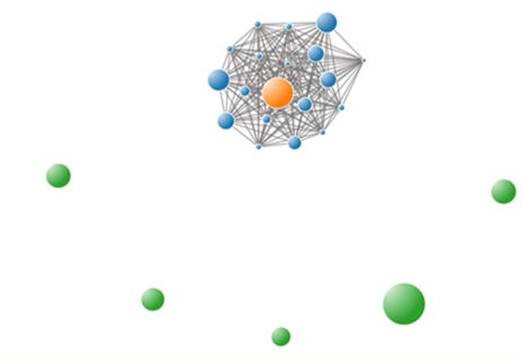What to know
CDC's Division of Viral Hepatitis (DVH) developed the Global Hepatitis Outbreak and Surveillance Technology (GHOST) system to characterize viral genotypes and transmission links among cases with hepatitis C virus (HCV) infection in outbreak settings. The system utilizes information generated from viral genetic sequences to determine the genotype of and characterize genetic similarities among HCV strains isolated from persons who are infected.

HCV variants
When someone is infected with HCV, the virus exists as a population of genetically similar variants within that person. The unique combination of variants associated with a given HCV case is termed a strain; variants evolve over time to form a unique “genetic fingerprint.” Measuring the degree of genetic similarity among HCV strains is useful for identifying transmission links between patients — a key part of an epidemiologic investigation.12345
GHOST overview
The DVH Molecular Epidemiology and Bioinformatics Laboratory uses next-generation sequencing to compare viral genetic sequences generated from samples collected from hepatitis C case patients. By comparing sequences from these samples, the degree of genetic similarity between HCV strains can be estimated.
While results of a GHOST analysis can be used to identify transmission links between patients in an HCV outbreak, other components of an epidemiologic investigation are needed to draw conclusions about source(s) of infection or directionality of transmission.
HCV transmission networks and GHOST reports
Results of a GHOST analysis may include a transmission network diagram. These diagrams help users visualize genetic similarities between HCV strains associated with different cases. When sequences from samples exhibit a very high degree of genetic similarity, this is evidence that associated cases are likely linked by transmission.2345
Review an example GHOST report here: Accurate genetic testing of hepatitis C virus transmissions in outbreak settings.

- Khudyakov Y. Molecular surveillance of hepatitis C. Antivir Ther, 2012;17(7 Pt B):1465–70.
- Campo DS, et al. Accurate Genetic Detection of Hepatitis C Virus Transmissions in Outbreak Settings. J Infect Dis, 2016;213(6):957–65.
- Longmire AG, et al. GHOST: global hepatitis outbreak and surveillance technology. BMC Genomics, 2017;18(Suppl 10):916.
- Ramachandran S, Thai H, Forgi JC, et al. A large HCV transmission network enabled a fast-growing HIV outbreak in rural Indiana, 2015. EBioMedicine 2018;37:374–81.
- Sims S, et al. Automated quality control for a molecular surveillance system. BMC Bioinformatics 2018;19:1–5.
